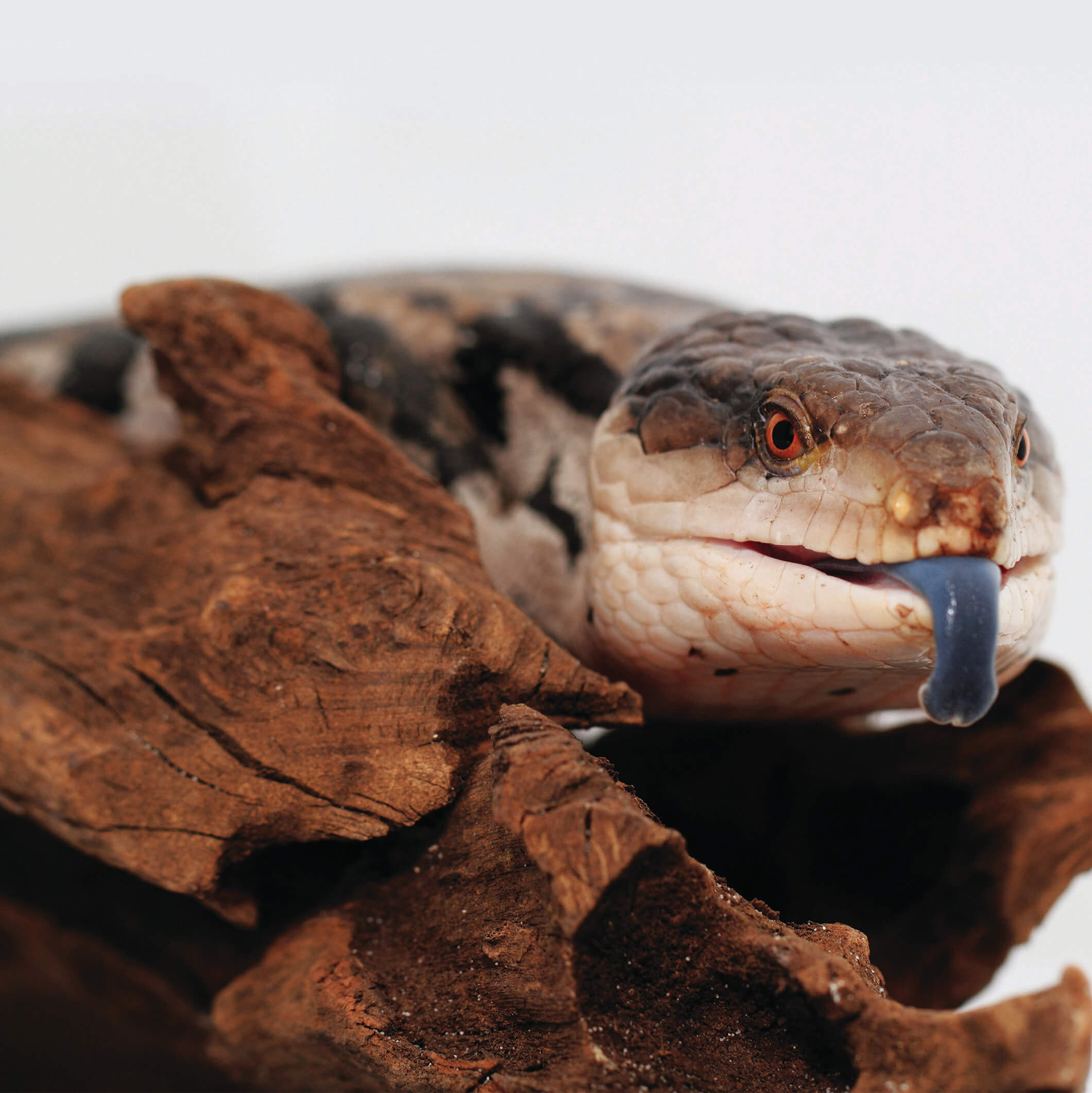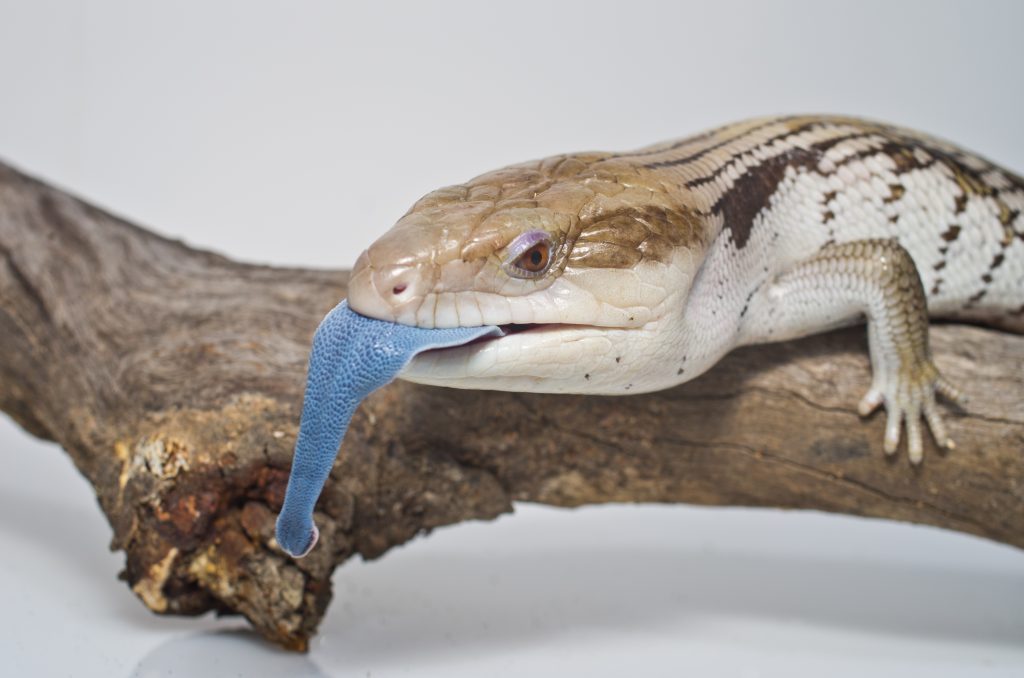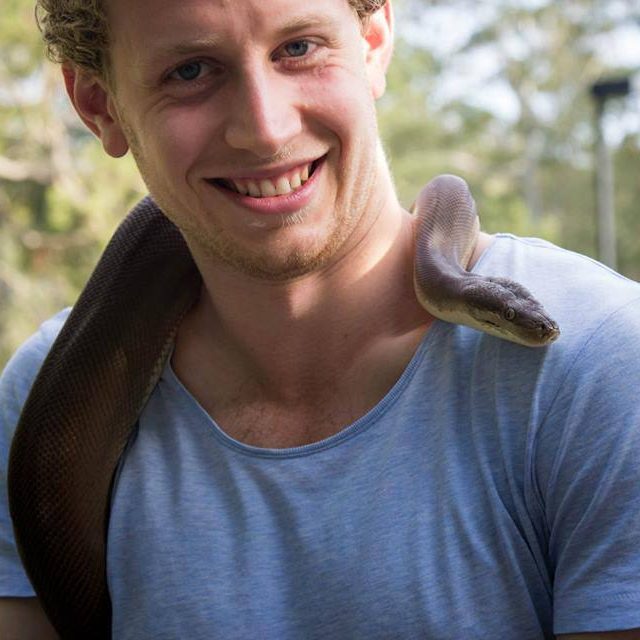The humble blue tongue lizard is a common visitor to many suburban backyards across the east coast of Australia. They enjoy feeding on snails, spiders and other invertebrates found around the home and love to hide amongst garden walls and pot plants. However, did you know you can keep a Blue tongue lizard as a pet?
Blue tongue lizards make a fascinating and unique pet and can even live for up to 15-20 years in captivity.
Blue tongue lizards are charismatic and easy to handle, making them the perfect pet for children and adults alike. Lets take a look at the basic care requirements for these iconic reptiles.
Housing

Timber or glass reptile terrariums are the ideal housing option for blue tongue lizards and should be no smaller than 90cm x 45cm x 45cm for one individual adult. Enclosures measuring 120cm x 60 x 60cm are also suitable and provide the animal with a larger surface area in which to explore and remain active. It is important that the enclosure has sufficient ventilation as well as a secure, lockable door.
A blue tongue enclosure should be furnished with a number of hides for the lizard to retreat to, a small water bowl and a suitable substrate. Substrates ideal for blue tongues include; coconut fibre, aspen, or synthetic grass mats. Artificial plants and timber logs can also be incorporated into the enclosure design providing a more natural and environmentally stimulating environment.
Like many other reptiles, blue tongues are considered solitary creatures and are generally best housed on their own. Having more than one blue tongue in an enclosure may lead to dominance and aggression issues.
Heating and Lighting
Providing adequate temperature gradients within a blue tongue’s enclosure is essential for their health and wellbeing. Eastern blue tongues require a basking spot maintained between 30-33˚C. They should have access to a slightly elevated piece of flat timber or rock to allow them to bask closer to the heat source. Ambient temperatures should be maintained with a gradient of 24-28˚C and should not drop below 18-21˚C at night.
Temperatures should be checked daily and must be regulated with the use of a high quality thermostat. Recommended sources of heat include the use of incandescent, halogen and ceramic (night time only) globes together with a good quality heat mat as a secondary source of under floor heating.
Ultraviolet light (UV) plays an important role in a blue-tongue’s growth and development. A 5.0-10.0 UVB tube or compact globe can be used as a source of artificial UV lighting in the lizard’s enclosure. Blue tongues also benefit from access to unfiltered, natural light at least once or twice a week. They require a ‘day and night’ cycle with heat and UV lights running for approximately 12 hours each day, set on a timer.
Nutrition – What to feed blue tongue lizards
Blue tongue lizards are omnivorous and feed on a range of plant matter as well as live insects in the wild. They are by no means ‘fussy eaters’ and will consume almost anything offered to them.
In captivity, blue tongues should be fed a variety of chopped fresh fruits and vegetables as well as live insects and commercially available diets including Vetafarm’s Lizard Food. Fruits and vegetables should make up around 70-80% of their diet and can include apple, pear, melons, pitted stone fruits, berries, banana, squash, carrot, endive and kale. Blue tongues have a sweet tooth and love soft fruits, however these should be fed in moderation as they can lead to loose faeces.
Live foods that can be offered to blue-tongues include; snails, crickets, woodies, mealworms (in moderation), black soldier fly larvae (BSFL) and silkworms. All live foods should be dusted with a calcium and multivitamin powder before being offered to the blue tongue (with the exception of BSFL and silkworms). The secret to a healthy lizard is a complete and varied diet. Juvenile blue tongues should be fed daily and adults can be offered food every two to three days. Fresh water should be available to the lizard at all times and changed daily.
Hygiene
It is important to maintain high standards of cleanliness and hygiene within the blue tongue’s enclosure. Daily ‘spot checks’ should be carried out cleaning substrate to remove any faeces, shed skin or uneaten food. A full substrate change should be undertaken every six to eight weeks (maybe more frequently depending on what substrate is used) and the enclosure thoroughly cleaned with a reptile-safe disinfectant such as Vetafarm’s Enclosure Clean.
Common Health Issues
In many cases, health issues in any captive reptile are usually a direct result of poor husbandry or an improper set up. If a reptile displays any abnormal behaviour, the best course of action is to get the animal assessed by a reptile veterinarian ASAP. Some of the most commonly encountered health issues in blue tongue lizards may include;
Metabolic Bone Disease – Calcium or vitamin D3 deficiency as a result of a poor diet and/or incorrect UV lighting. Symptoms may include spinal/tail kinks, weakness, lethargy and muscle spasms.
Dysecdysis – Low humidity can result in a blue-tongue having an abnormal or poor shed.
Respiratory Infection – Low temperatures and high humidity for extended periods can lead to respiratory infection in a lizard. Symptoms include sneezing, discharge around nostrils and mouth, coughing, lethargy, loss of appetite.

Licence
All lizards native to Australia are considered protected species within the country. To lawfully accommodate a blue-tongued lizard, individuals must complete the registration process with their respective local government authorities by obtaining a ‘Companion Animal Keeper Licence.’ It’s important to note that the specific requirements for this license may differ from one state to another.
Blue tongue lizards make a fascinating pet for beginner and experienced reptile keepers alike. They are a truly iconic native reptile species and even come in a range of colours including rare albino and hypermelanistic (black) morphs. With their relatively straight forward husbandry requirements, its no surprise there has been an increased interest in these amazing lizards in recent years.
Article written by Ben Dessen

